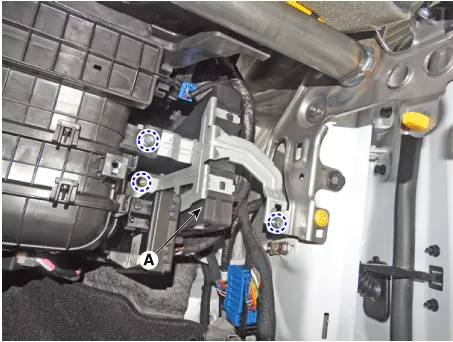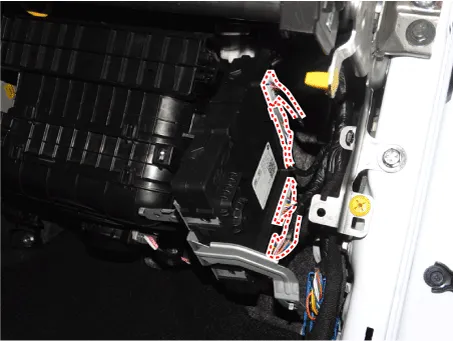Hyundai Elantra (CN7): Tire Pressure Monitoring System / TPMS Receiver
Description and operation
| Description |
TPMS Receiver : BCM(body control module) integrated management

| 1. | Early state
|
| 2. | Normal State
|
| Operation |
| 1. | General Function
|
| 2. | General Conditions to Learn New Sensors
|
| 3. | General Conditions to Un-Learn a sensor that is removed
|
Repair procedures
| Replacement |
[TPMS Receiver (Integrated Body Unit (IBU))]
| 1. | Turn the ignition switch OFF and disconnect the battery negative (-) cable. |
| 2. | Remove the glove box. (Refer to Body - "Glove Box") |
| 3. | Remove the IBU (A) after loosening the mounting nuts and bolt.
|
| 4. | Remove the IBU after disconnecting the connector.
|
| 5. | To install, reverse the removal procedures. |
| 6. | learn by connecting diagnostic tool. |
| 7. | Perform TPMS test to check for any abnormality. |
| Diagnosis procedure by using diagnostic device |
The main contents of diagnostic method using diagnostic device are as follows:
| 1. | Connect self-diagnosis connector (16 pins) located in the lower driver side crash pad to self-diagnosis device, and then turn on the self-diagnosis device after key is ON. |
| 2. | Select the "vehicle model" and "TPMS" on GDS vehicle selection screen, then select OK. |
[Vehicle Name Writing Method]
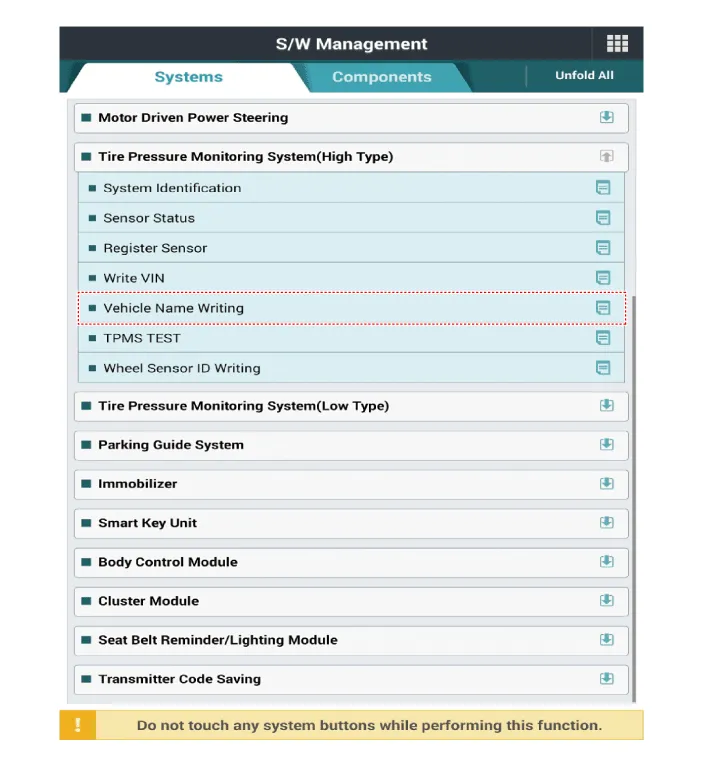

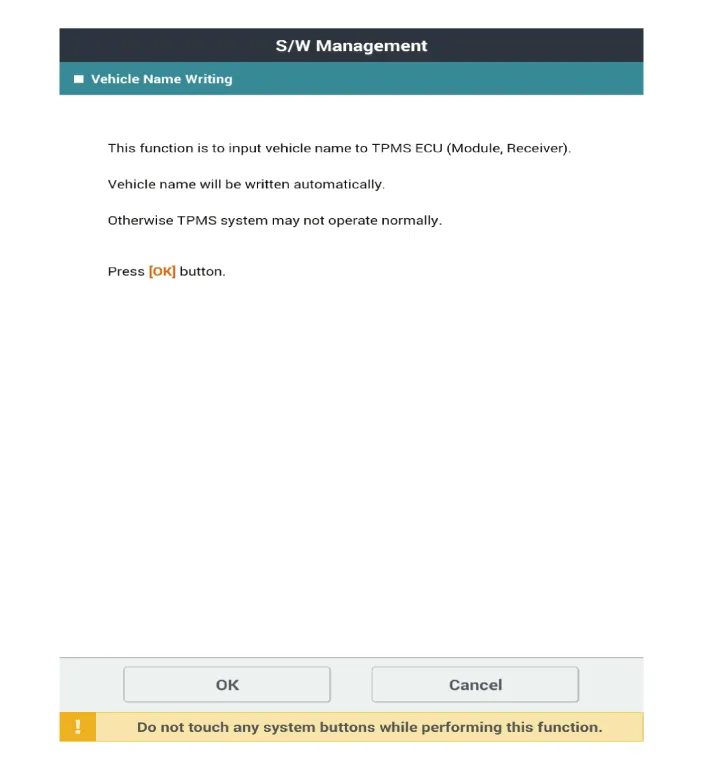


[Wheel Sensor ID Writing Method]
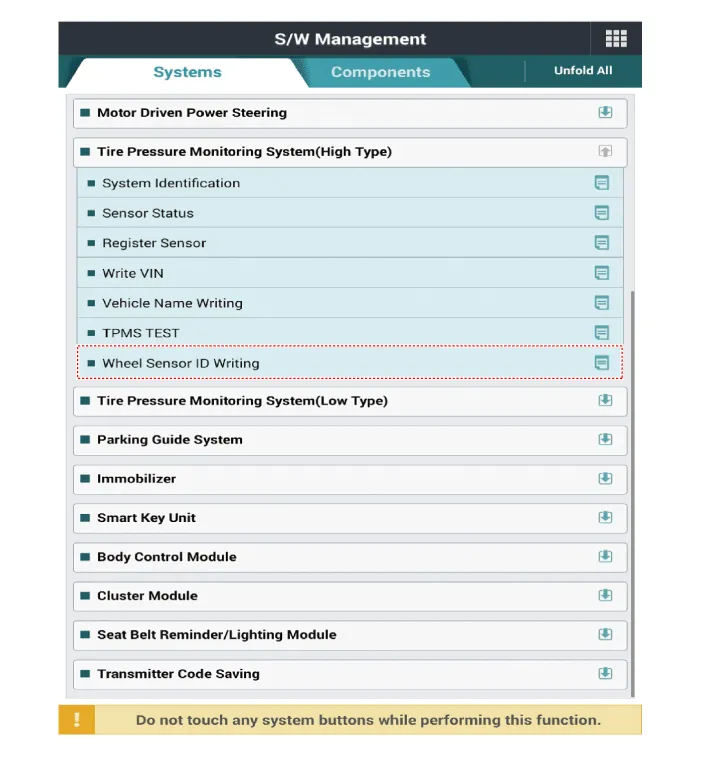
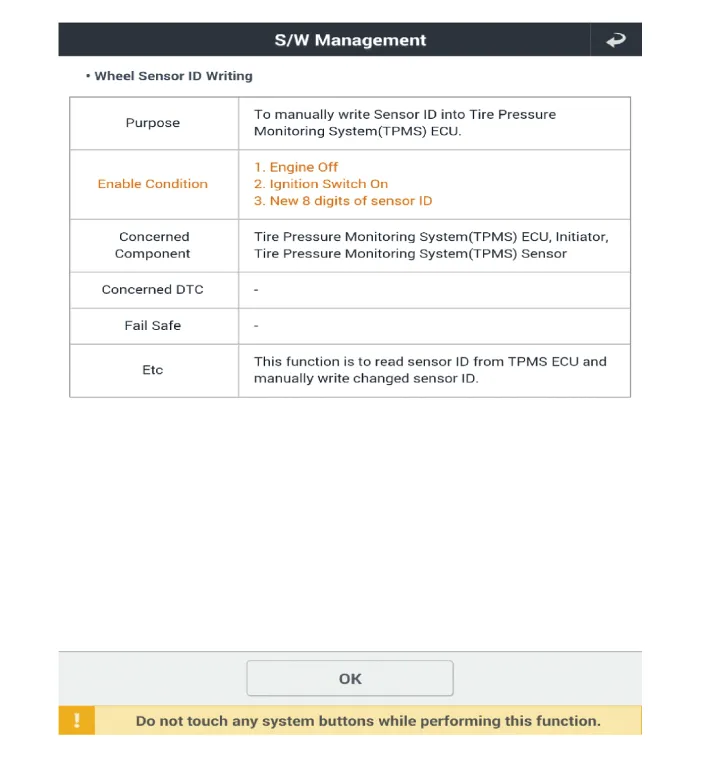


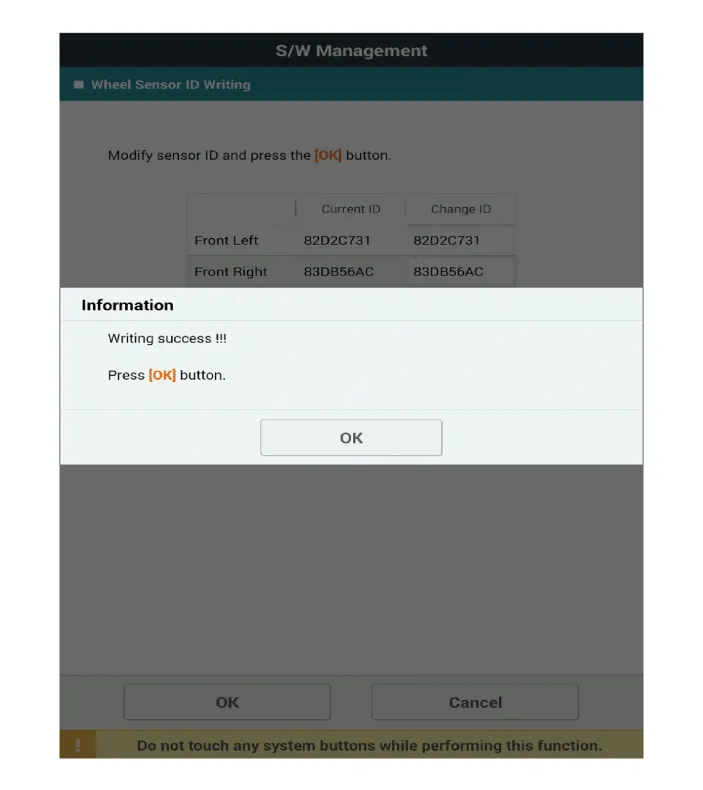
| Inspection |
| 1. | Check the vehicle code, VIN, sensor ID storage and normal storage in the receiver. |
| 2. | Check if the TPMS receiver [Integrated Body Unit (IBU)] status is normal. |
| 3. | Check whether the TPMS warning light is off and DTC. |
Description and operation Description 1.Function• By detecting the pressure, temperature, acceleration, and battery condition, transmit information to ECU by a wireless RF.
Other information:
Hyundai Elantra (CN7) 2021-2025 Service Manual: Condenser
Components and components location Components Location[General type]1. Condenser[N Line]1. Condenser Repair procedures Inspection1.Check the condenser fins for clogging and damage. If clogged, clean them with water, and blow them with compressed air.
Hyundai Elantra (CN7) 2021-2025 Service Manual: Repair procedures
Inspection1.Check for resistance between terminals in each switch position (LH).[LH : Audio + Hands free] Switch Resistance (±5%) SEEK Up430 ΩSEEK Down1.11 kΩMODE2.11 kΩMUTE3.11 kΩVolume (+)4.
Categories
- Manuals Home
- Hyundai Elantra Owners Manual
- Hyundai Elantra Service Manual
- Heating, Ventilation and Air Conditioning
- Body Electrical System
- Suspension System
- New on site
- Most important about car
Copyright © 2025 www.helantra7.com - 0.0226

